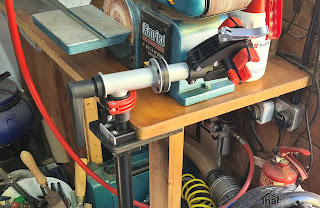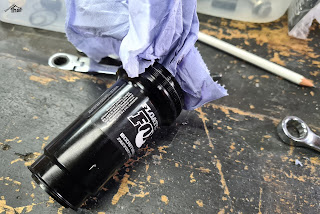When fitting tubeless bike tyres it is usually necessary to have a fast blast of air to get the beads to seal enough to hold air then more to seat the beads in the rim. This is easiest done with a compressor.
Most tyre inflators, for compressors, use a rubber hose with a Schrader, car, valve end. In to which a small Presta valve adapter has to be fitted. That combination can be difficult to hold in place on a Presta valve while also trying to hold the wheel when it is not on the bike.
 |
| An early version |
It took a few attempts to get it right. The first version only fitted when the valve core was removed. It worked and didn't need a washer but it is more convenient to be able to use the same tool to complete the inflation, so I designed some more.
 |
| Disappointing adapter |
Another attempt used a standard Presta valve adapter. This was disappointing. It was hard to hold in place and, as is typical with these adapters, the rubber O-ring kept being pulled off when removing the tool.
The latest design uses a rubber O-ring that fits tightly in a deep groove.
The metric O-ring has a 5mm internal diameter with a 2mm cross section, making it a 9mm outside diameter. It is a snug fit and needs something like a blunt needle or small nail to help get it in.
It is designed to 3D prints without any supports. I used 2mm thick walls and a 30% fill. My preferred filament is ColorFabb nGen.
==
Download 3D models:
Tyre Air Nozzle, STEP and STL (Zip)
Licence attribution - small business exception
My models in the GrabCAD library.
==



















































